Well, the consensus of the General staff was clearly: "In the morning hit the RDF and fields west of Rye" then "send across low-level raids again in the same direction as the morning raids to convince the emeny that a follow-up strike was imminent but divert them back to knock out what remains of Lympne and Manston."
Goering looked at these suggestions and took them one further. "Why waste our time on Lympne and Manston gentlemen?" he demanded, "The RAF is blind from Dover to Foreness. Let us show him we can strike at his London airfields with impunity, and dare him to stop us!!" (Call this A test of the Deathstar gambit...)
The Operations staff therefore drew up this plan:
- Unescorted Ju87s would go across at low level, at first light, to hit RDF west of Rye and try to convince the RAF this was in preparation for a major attack on the southwest of 11 Group. In addition, a single Ju87 staffel would raid Manston, again unescorted, to test air defences there.
- Following the Stuka raids, the major offensive would begin. This would entail a raid comprising 90 He111 and 130 Bf109s as escort, which would dogleg through the gap between Foreness and Dover and drive straight at the Biggin Hill sector station, home to at least 3 RAF squadrons.

- A smaller raid of escorted medium bombers would be timed to coincide with the main raid, in the anticipation it would attract the main bulk of RAF defences. This raid would hit the Ventnor RDF station south of Tangmere and Westhampnett, and pave the way for strikes on those airfields later in the day.
The Stuka raids were approaching the coast when intercepted. All were turned back, with some losses.

At Manston however, the Stukas got through, and bombed without sighting the RAF. There was rejoicing at Luftwaffe command - the door was indeed open!
Over Calais, the raid built steadily.
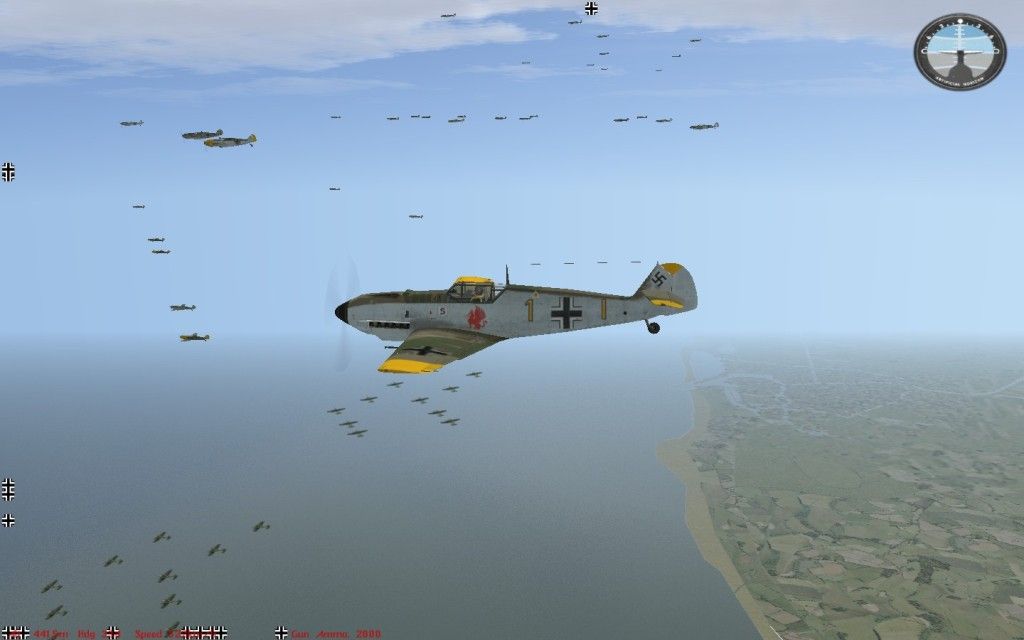
JG 26 was flying high escort.
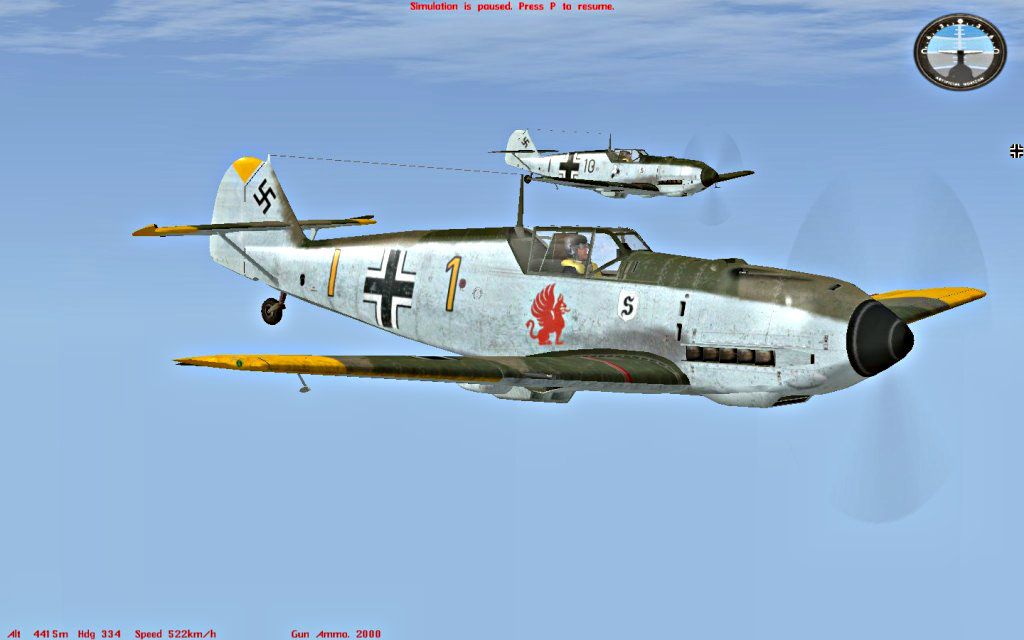
But all did not go to plan. Perhaps scared into mounting standing patrols, RAF fighters were sighted patrolling the coast between Dover and Manston. 3 squadrons. Luckily, our fighters were in position to attack, with the advantage of height.
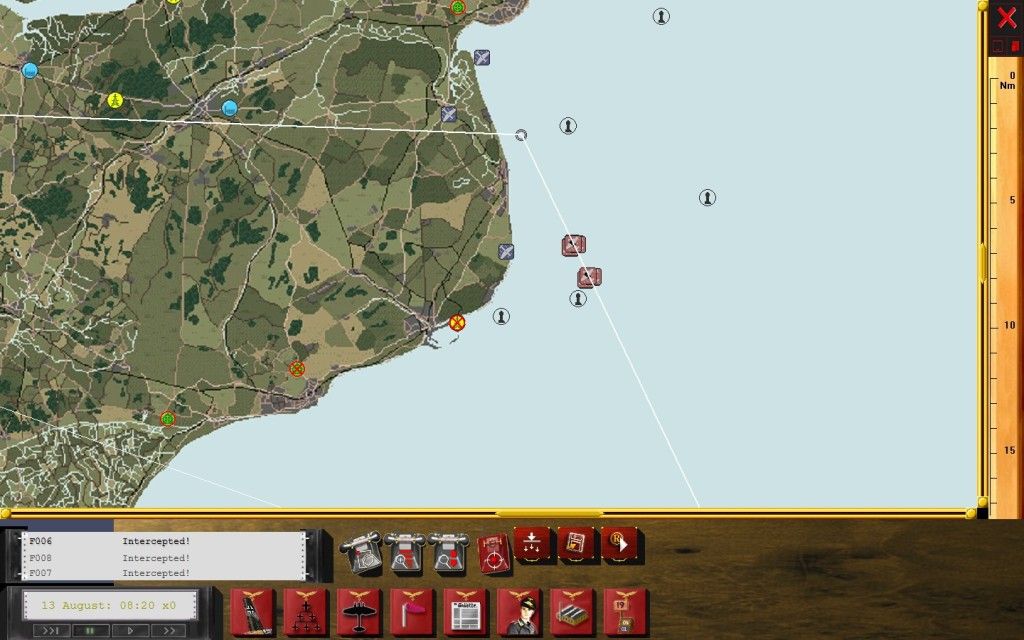
The sky was soon full of twisting turning machines.
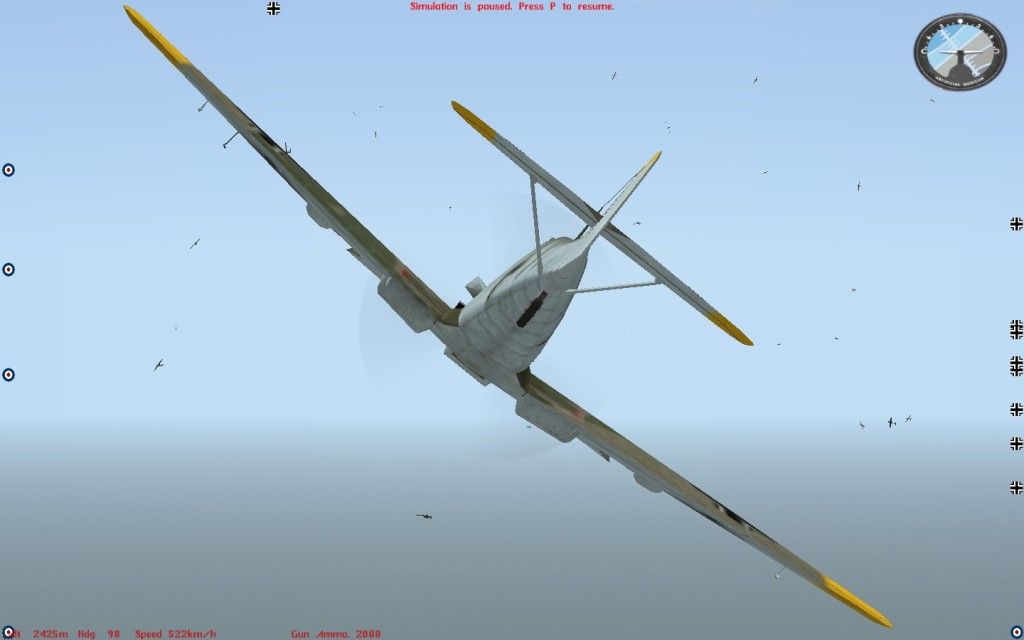
But the RAF was kept down low, and our bombers sailed on through the gap in the RAF defences, toward Biggin.
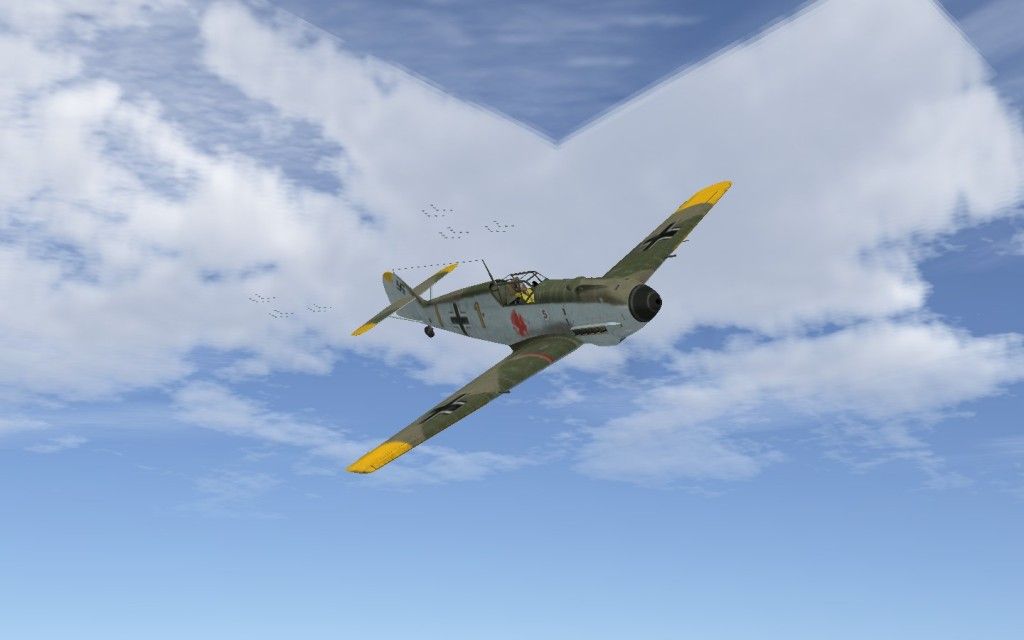
There were only 36 RAF aircraft, and two gruppen, or nearly 80 LW aircraft, closed on them, the rest staying with the bombers. It was carnage.
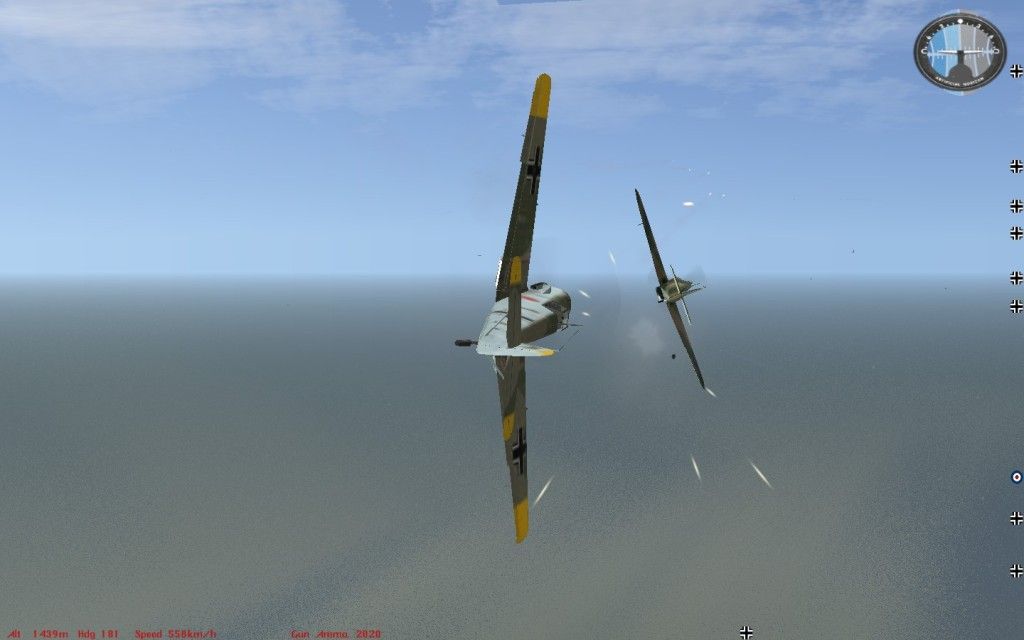
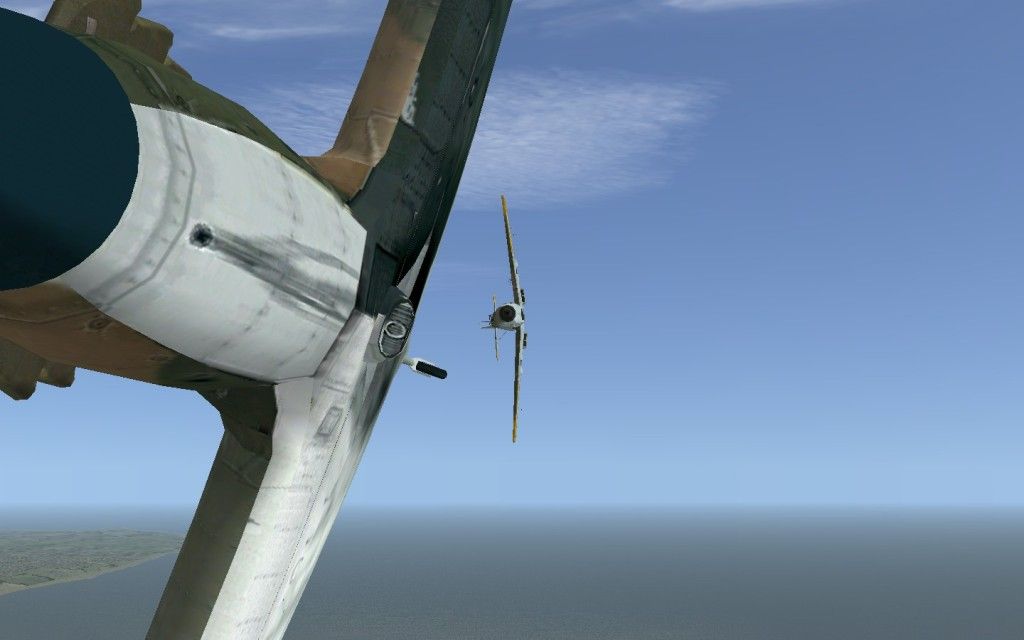
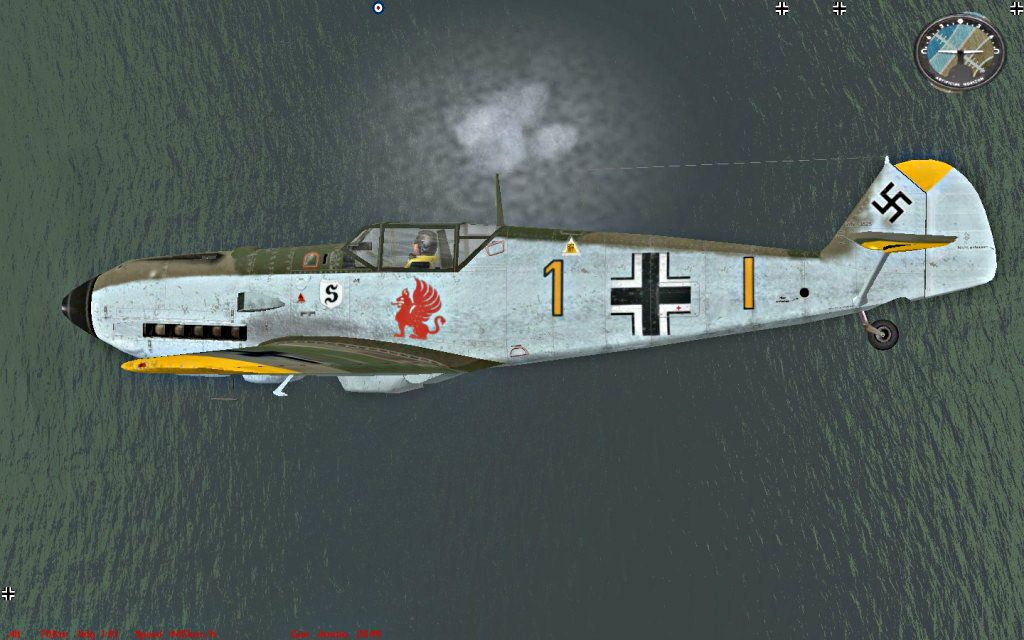
Excited LW pilots claimed at least 20 RAF aircraft destroyed, but our own losses were significant. The less capable RAF Spitfires and Hurricanes are proving more dangerous than anticipated.
As the bombers approached Biggin Hill, the sky was clear.
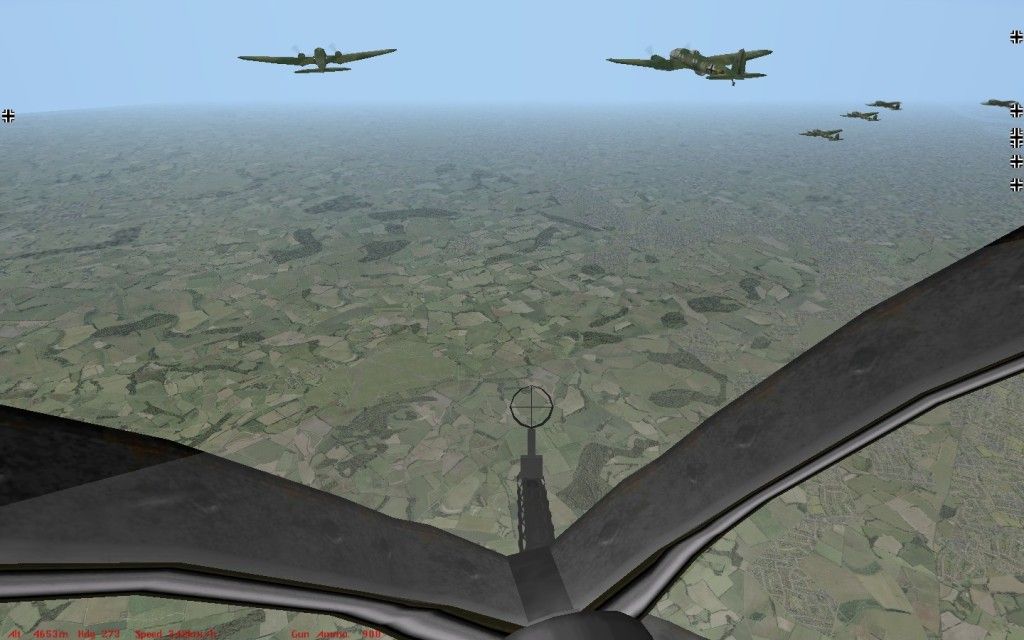
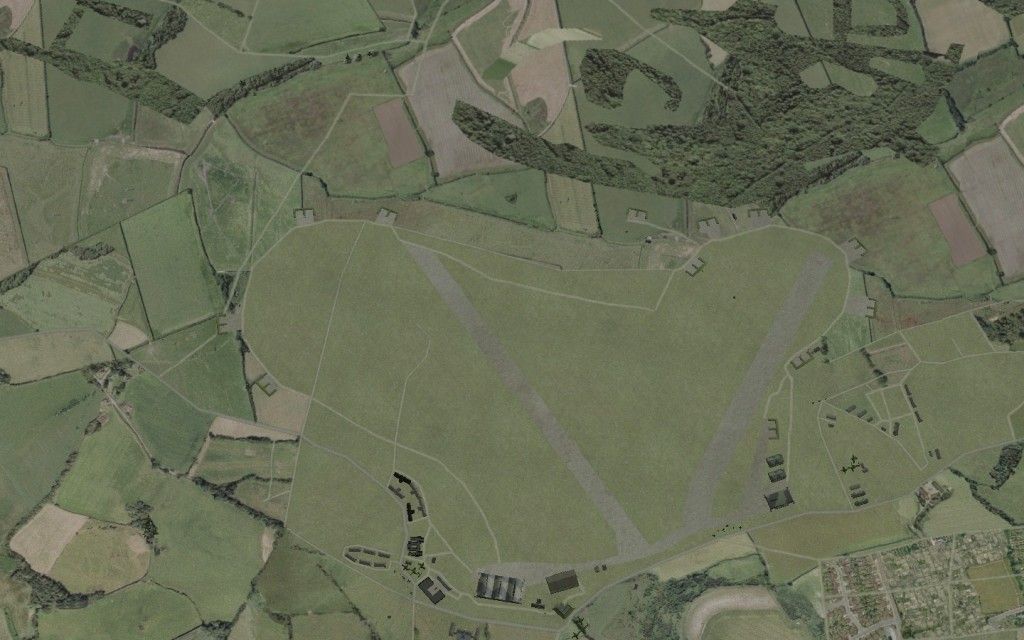
Flak began bursting ineffectually, as the first wave of bombers swept over the British field, the second wave not far behind.
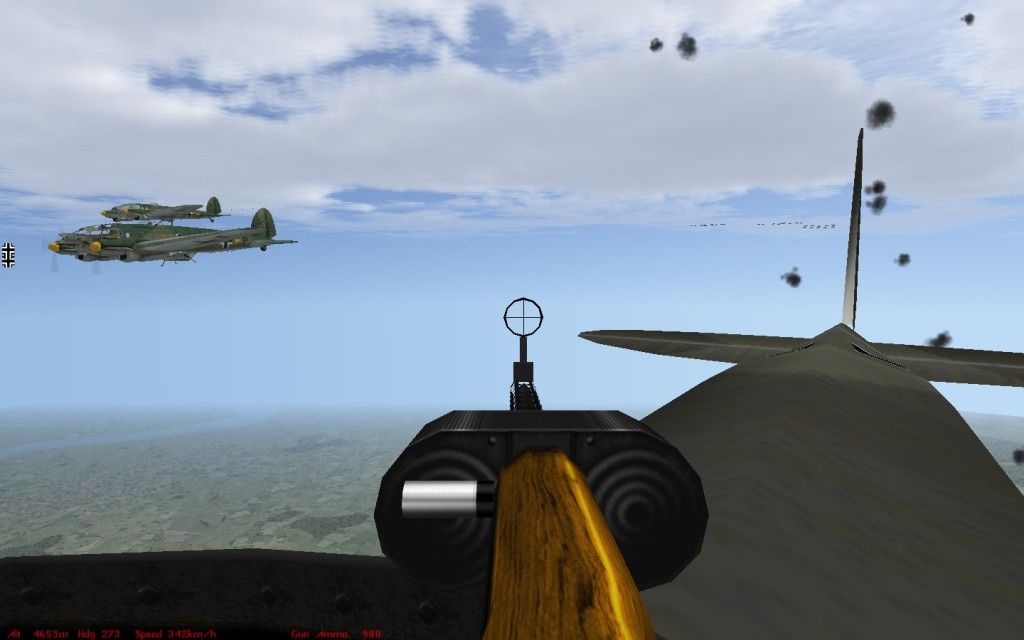
Bombs rained from the bellies of the Heinkels
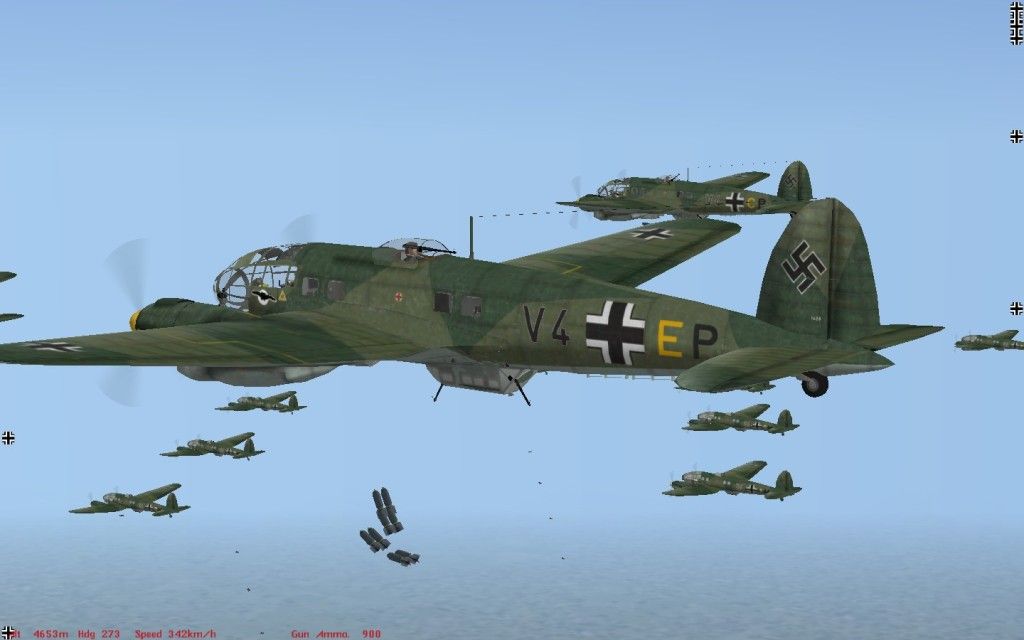
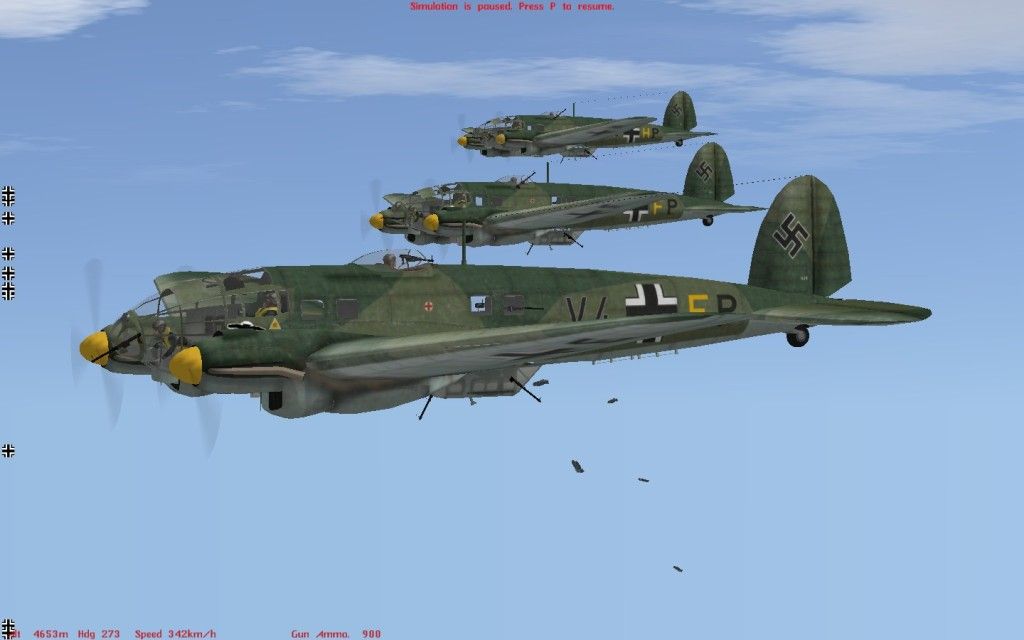
And soon a thick pall of smoke showed the Heinkels had done their job.
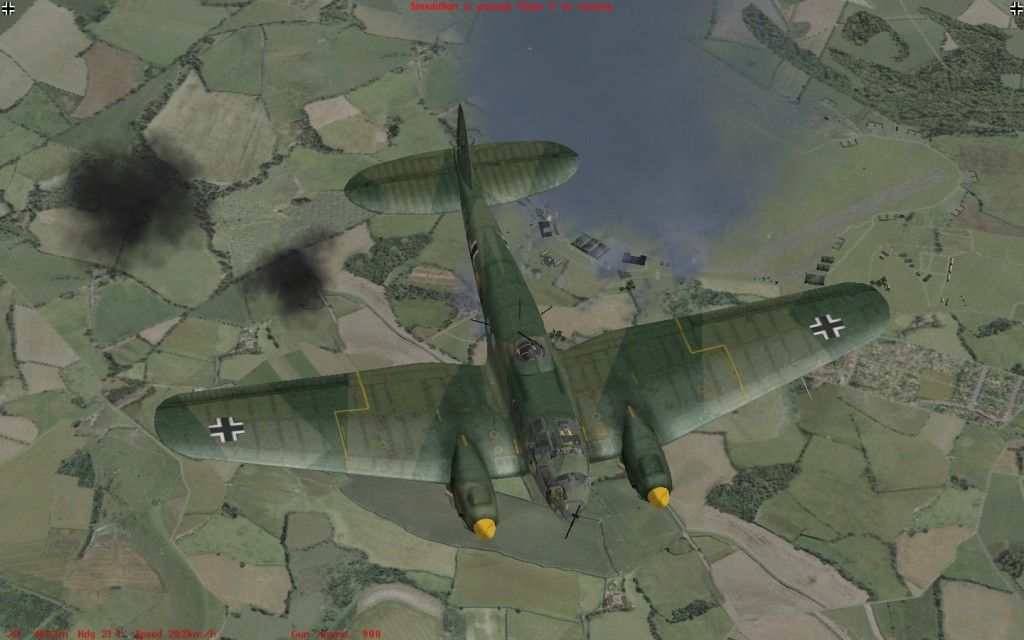
The raid made it back without incident, and without further interception, egressing over Dover and then dispersing over Calais.
The raid on Ventnor was a lesser success, and lucky to be so. The eager escorting 109s got ahead of the bombers, and were circling over Ventnor while the bombers were still making their ingress, complaining about a lack of RAF defenders. The RAF however had ignored the provocation of the fighters and two squadrons were making straight for the bombers, with the LW fighters now out of position, though they had the height. The LW turned desperately back toward the bombers and the RAF fighters climbing to meet them, but were too late. The RAF got there first, and two bombers were knocked down within the first minutes. The 109s of JG27 then arrived on the scene, and drove the RAF off, enabling the bombers to strike Ventnor, but with reduced effect.
The mid morning recon gave the following intel.
Damage to Biggin Hill was light:
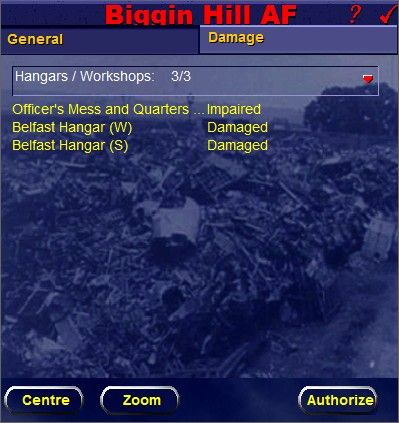
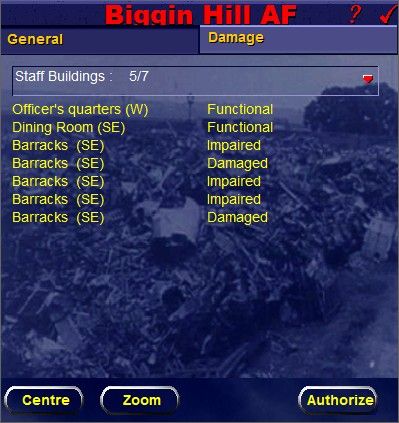
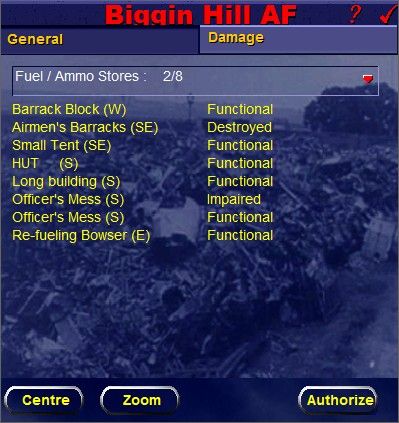
Damage to Ventnor also light. Recon also showed mobile RDF units have been set up at Foreness, indicating this station may be operational again. The RAF trying to close the door behind them!
But enemy aircraft losses were substatial.
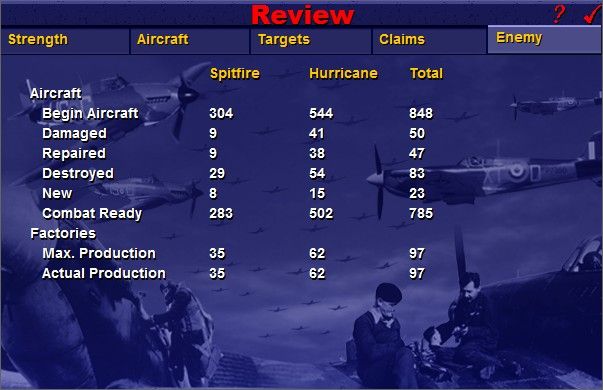
39 RAF fighters were destroyed this morning, for a total of 83 RAF aircraft since Adlertag was initiated! The tally includes 29 Spitfires and 52 Hurricanes.
The cost to our own forces this morning was acceptable. 32 of our own fighters were lost, 5 Ju87s and 1 He111, with one of the other damaged He111s making it back to France.
Fighter for fighter, we have now destroyed 83 British fighters for the loss of 44 of our own. Our total losses now are 114 aircraft.
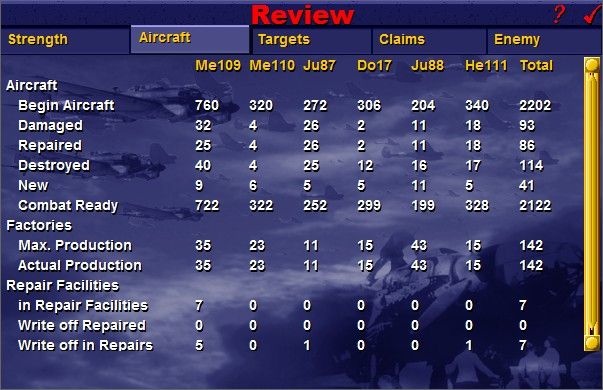
It appears however, that our loss:kill ratio is better for the smaller low level raids of yesterday, than for the major high alt raids of today, where the fighters are more restricted by being tied closely to the slower bombers. And our raids themselves, although on target and in strength, made little impact on the RAF ability to operate at Biggin Hill and Ventnor. On top of this, the Foreness RDF station knocked out yesterday, is transmitting again today.
Having committed so many resources this morning, we have a smaller force of fighters, dive bombers and level bombers available for afternoon/evening operations.
Thoughts?